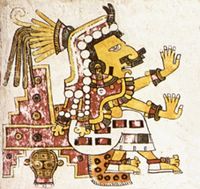American Indians and the Academy
Have any Natives ever won an academy award? Or even been nominated?
Well, it seems that Jeff Chandler was nominated playing the role of Apache chief Cochise in Broken Arrow (1950). But unfortunately, Chandler was a white man only playing an Indian. 'Fraid that doesnt count.
It wasn't until 1970 than a Native American was nominated for an Oscar. Chief Dan George was nominated as Best Supporting Actor for his role in Little Big Man. He did not win.
And after another 20 yr interval had passed Graham Greene was nominated for his supporting role in Dances With Wolves. Alas, he did not win either.
And that looks to be it. Twice we've been nominated for supporting roles and twice we've lost. Always the Tonto, never the Lone Ranger.
There was one other "Native moment" of note in Oscar history. Upon receiving his Best Actor award for the Godfather, Marlon Brando sent Sacheen Littlefeather (aka Maria Cruz) to decline his award. I've read some conflicting accounts over whether Cruz was Native or not, but nevertheless she made part of a rather mild speech that was cut short. At the time, AIM was under seige at the Second Wounded Knee and by the Tuscon Weekly's account, the people at Wounded Knee were happy to get the support.
Oh, and according to that same article in the Tuscon Weekly, Clint Eastwood "asked if the Best Picture Oscar should be awarded 'on behalf of all the cowboys shot in John Ford Westerns over the years'." Nice, Clint. So glad you won last night.
And I think that wraps up the history of Native Americans and the Academy of Motion Picture Arts and Sciences. If you know of any moments, nominations or *gasp* wins, pls leave them in the comments and I will happily add them.
Oh, and for a nice recap of last night's award's, might I recommend my friends over at Bitter Daze.


 So Starbucks has a new chocolate drink named Chantico, after the Aztec goddess of the hearth.
So Starbucks has a new chocolate drink named Chantico, after the Aztec goddess of the hearth. 